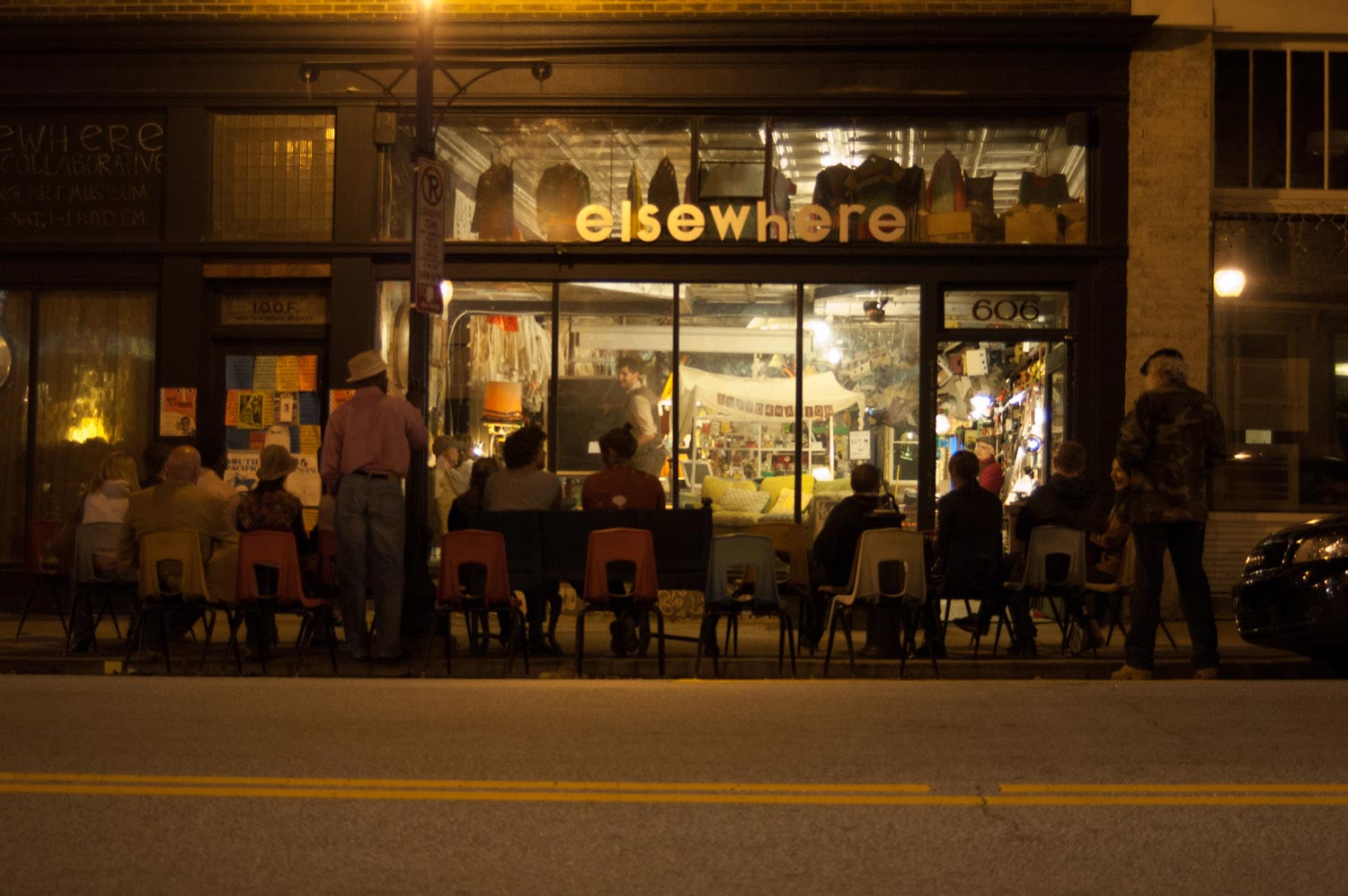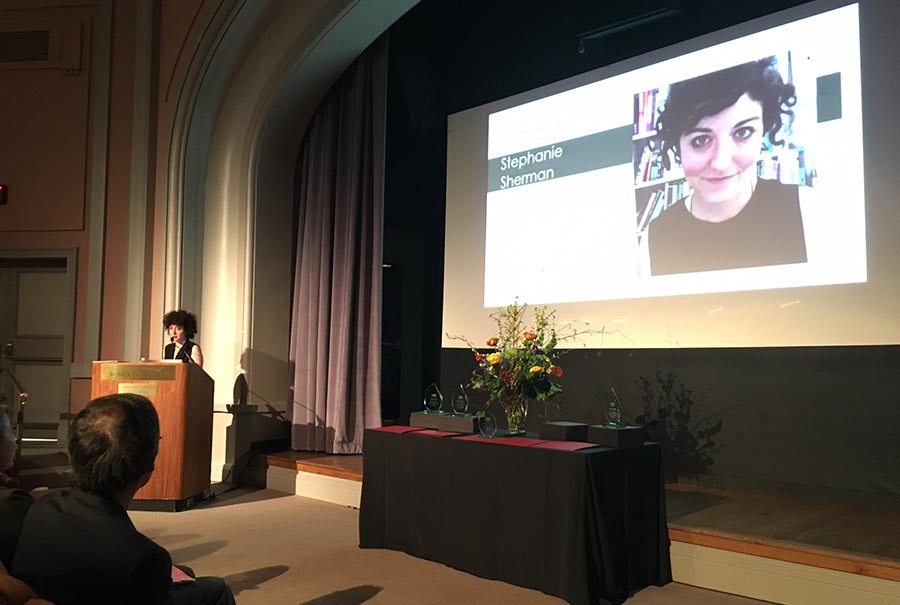
UC San Diego Visual Arts Graduate Student Honored for Initiating Art Practices
Published Date
By:
- Sheena Ghanbari
Share This:
Article Content

“Elsewhere, A living museum.” Photo by Stephanie Sherman
University of California, San Diego Department of Visual Arts Ph.D. candidate Stephanie Sherman was recently recognized for her achievements in art and activism by the Women’s Caucus for Art (WCA), which honored her with the President’s Award for Art & Activism at the 2016 College Art Association conference in Washington D.C. The award is given to individuals who exemplify the WCA mission of creating community through art, education and social activism.
Sherman, a doctoral candidate in art practice, however, doesn’t typically think of herself as an activist.
“I’m more of an actionist, an organizer, an activator, a catalyst, an instigator,” she said. “We most often associate activism with work towards change of a specific issue or policy, with a clear social, political, or economic outcome. My form of activism is different.”

Stephanie Sherman accepting the President’s Award for Art & Activism at the National Museum of Women in the Arts. Photo by Stephanie Sherman
For example, in 2003 Sherman co-founded Elsewhere, a living museum set in a three-story former thrift store in Greensboro, North Carolina.
“My projects start with social and material surplus—often outmoded media or abandoned spaces—and from them develop systems for co-production and collaboration.” She also explores experimental collaborative practices in everyday life.
“This form of organizing is about opening channels to shared imagination and finding pragmatic ways to orchestrate flows of creative resources in real time and space.”
Sherman is a founding member of Common Field—a new network of visual arts organizations. Stemming from a retreat with 20 directors of artists’ spaces from across the country, Common Field is a membership organization that acts as a resource to promote shared learning between visual arts organizations. Sherman notes that many arts organizers come to the field with great passion and vision but do not always have formal or practical knowledge or a forum to discuss the unique values of this field.
“The goal is to make the noncommercial, experimental world of artists’ spaces and projects more visible and viable. We’re creating conduits for national and international exchange and advocacy, assembling tools and practical resources, and supporting learning and collaboration for our members,” explained Sherman.
As an art practice student, Sherman will have both a visual and written component to her dissertation. Her research focuses on the aesthetics of collaborative platforms and her thesis explores the relationship between modern transport systems and media, tracing the iterations of modernity as its legacies confront shifting temporalities, aesthetic logics, technical capacities, social desires, and political ideologies in the contemporary milieu. This work is in sync with the new Speculative Design program in the Department of Visual Arts.
Sherman’s scholarship is in synergy with her community engagement projects, which she keeps active alongside academic demands. She has been working with The Design Lab at UC San Diego where she is helping create a participatory creative wing exploring socio-technical systems design. She is the new board member of Materials & Applications, a non-profit supporting Los Angeles experimental artists, architects, and designers in public works. Sherman collaborates regularly with artist Agustina Woodgate, and they are working on a large public commission for the new Underline Park in Miami to launch at the end of the year.
Sherman describes her practice as risky.
“It requires long, multi-year ventures into zones with often indeterminate outcomes. It requires an extremely extroverted disposition, and a sensitivity to mobilizing people from all walks of life in constantly changing circumstances.”
However challenging, according to Sherman, her initiatives make forgotten or suppressed resources more accessible and visible. This is part of her social vision for art that catalyzes unrecognized opportunities in unexpected ways.
The Women’s Caucus for Art was founded in 1972 in connection with the College Art Association (CAA). WCA is a national member organization unique in its multidisciplinary, multicultural membership of artists, art historians, students, educators and museum professionals. Its mission is to create community through art, education, and social activism. WCA is committed to recognizing the contribution of women in the arts; providing women with leadership opportunities and professional development; expanding networking and exhibition opportunities for women; supporting local, national and global art activism; and advocating for equity in the arts for all.
The UC San Diego Department of Visual Arts is ranked in the top 13 nationally. To learn more, visit the website.
Share This:
You May Also Like
Stay in the Know
Keep up with all the latest from UC San Diego. Subscribe to the newsletter today.


